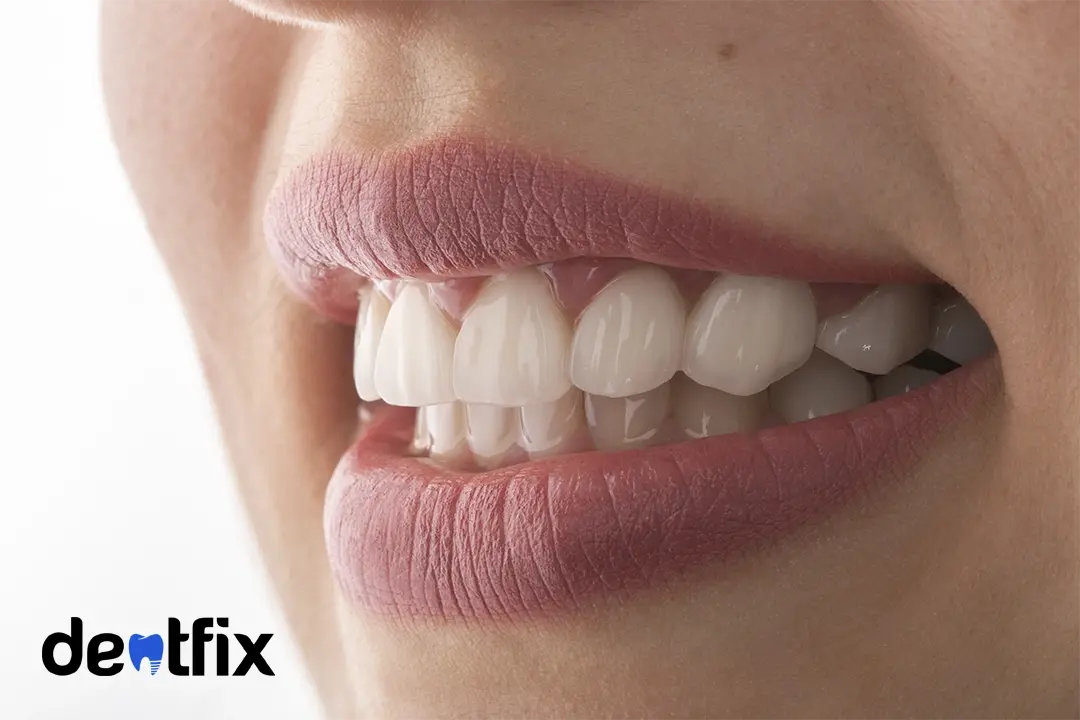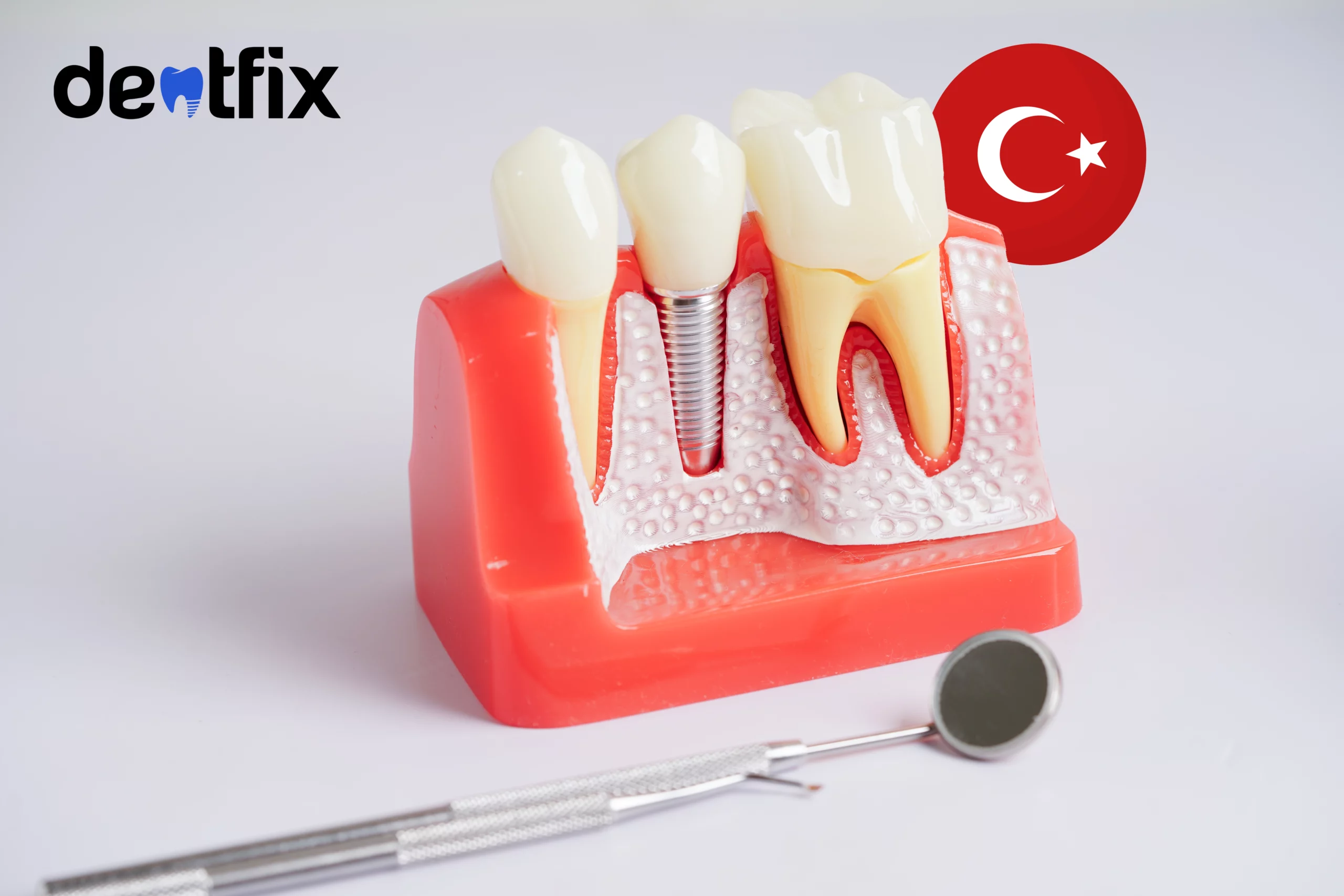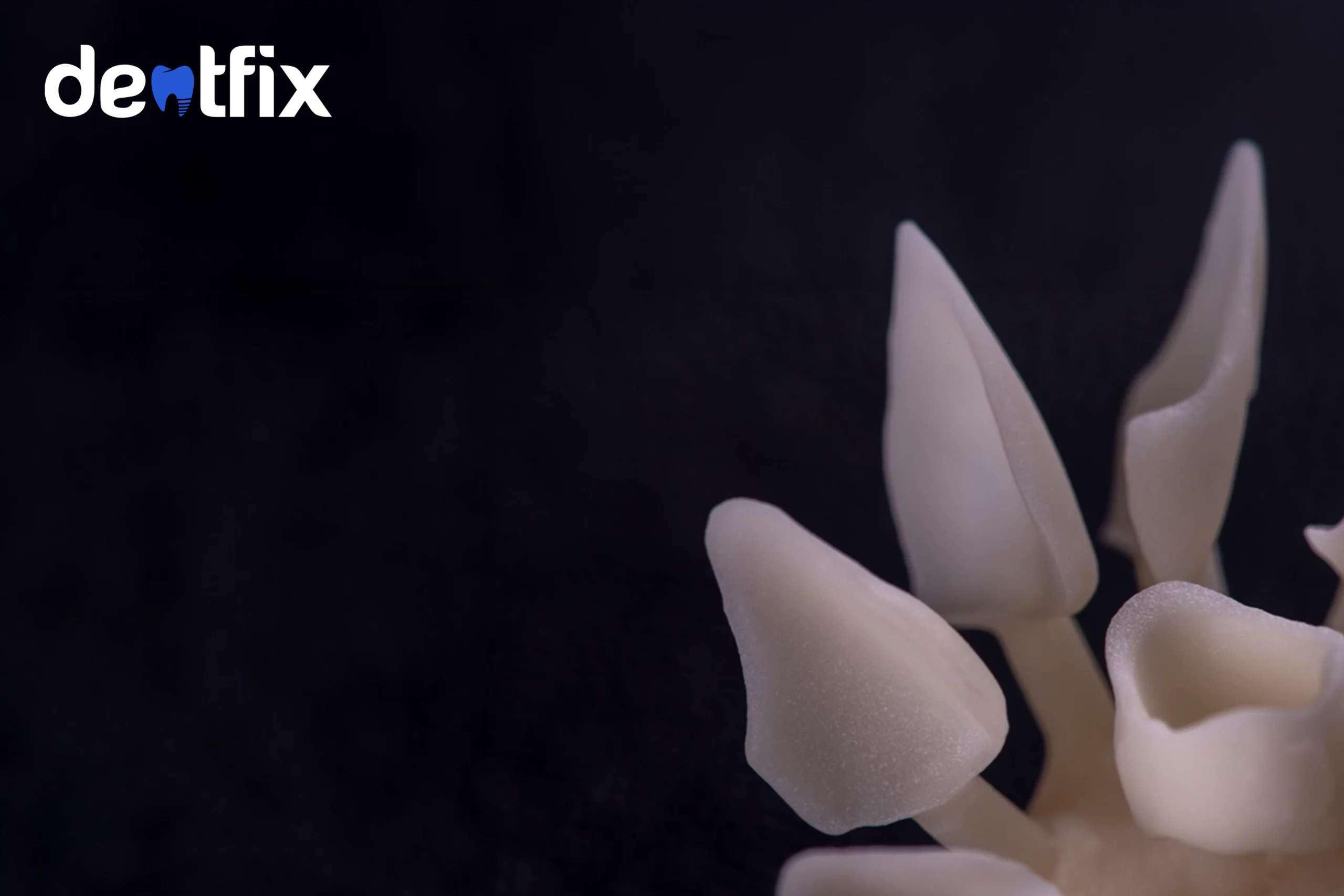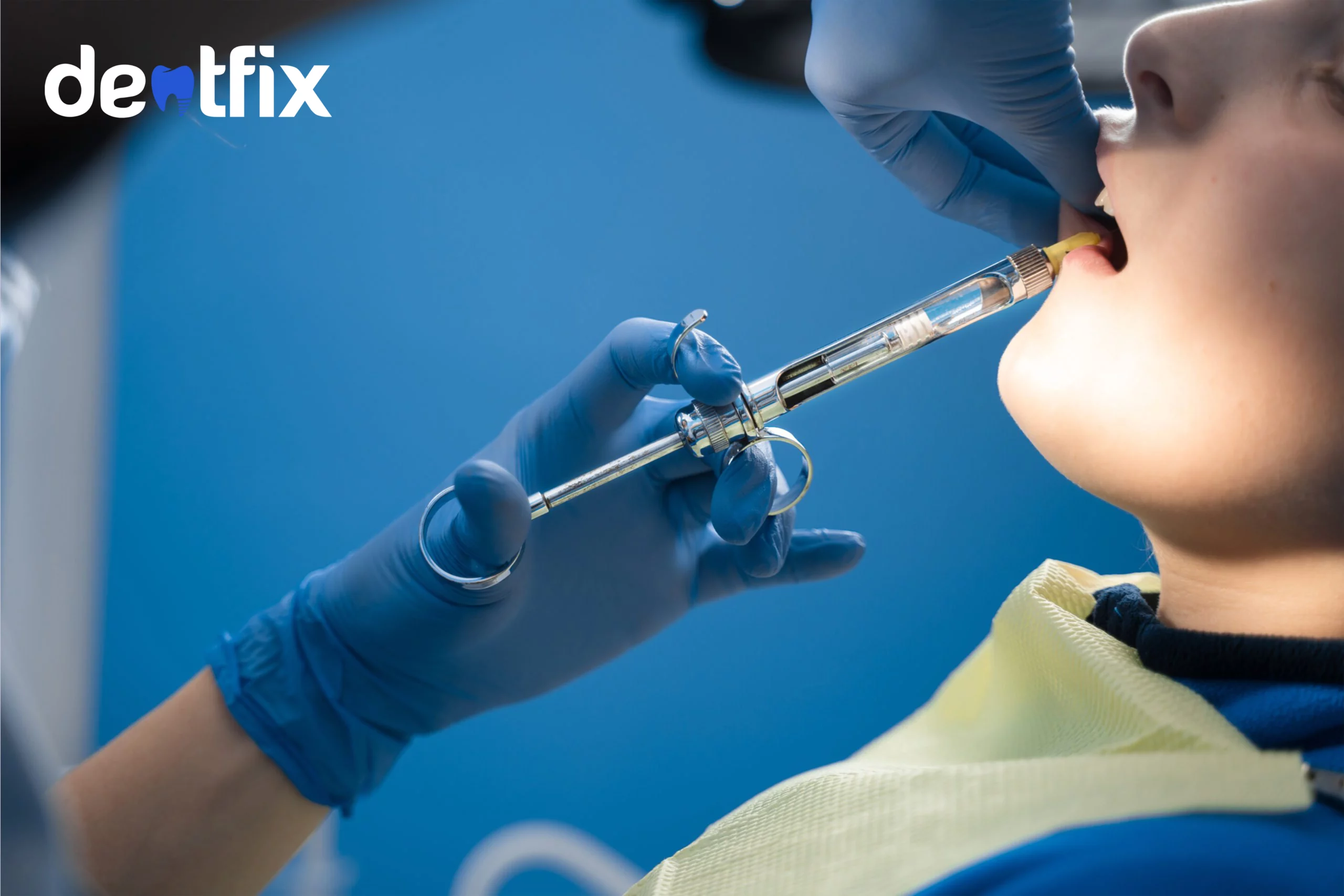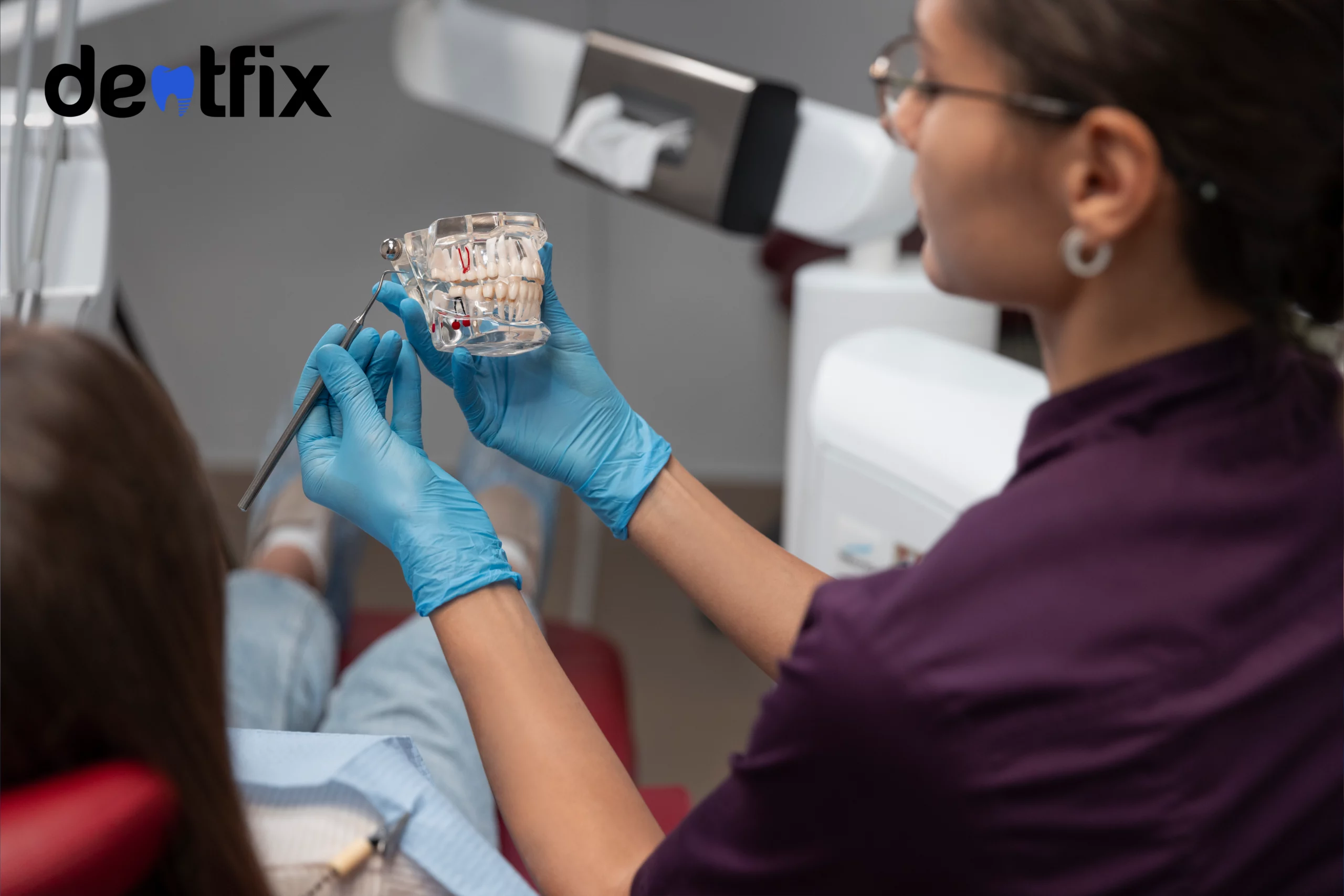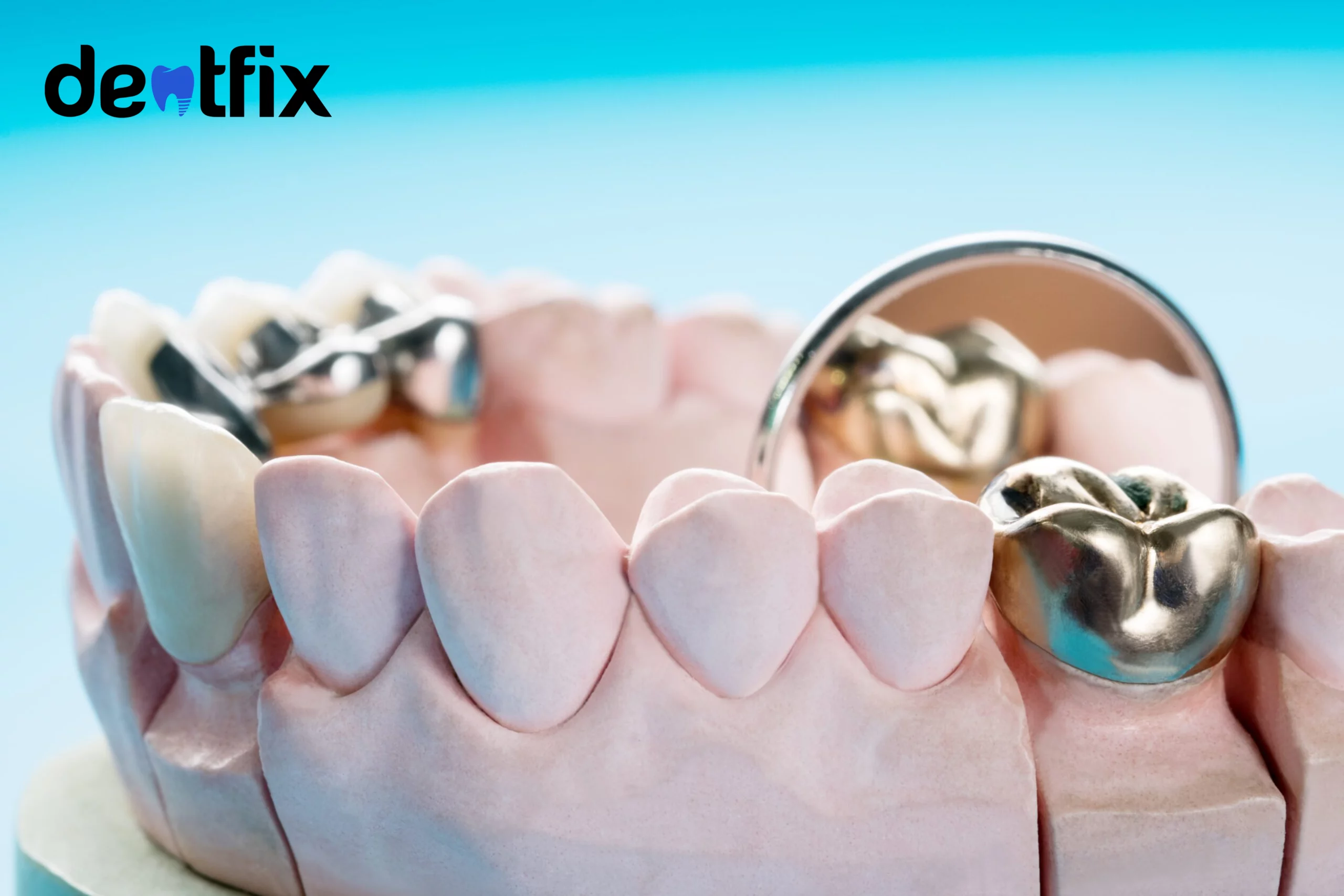If you’ve been thinking about changing old crowns for a while and been asking, “Can crowns be replaced?” the answer is yes. The need for replacing a dental crown occurs when your current crown shows signs of decay.
Dental crowns are not eternal and you may need to start thinking of replacing a dental crown after 10-15 years. The reasons for replacing a dental crown vary from person to person. Usually, they need crown replacement because of the time passed or because of chipping.
The process of dental crown replacement is fairly simple and it will only take three dentist visits at the most. The process involves three stages: evaluation, treatment, and replacement. Each stage is performed carefully and meticulously to make sure no dental complications occur.
In this article, we discuss reasons why you may need crown replacement and how the process goes:
Can a dental crown be removed and replaced?
Dental crowns can of course be renewed. At first, the crowns in your mouth should be removed and replaced with new coatings. In most cases, dentists recommend putting in new ones rather than using the old ones.
Curious how many times a crown can be changed? In theory, a dental crown can be changed many times. But each replacement will weaken your tooth and increase your risk of complications such as tooth fracture or nerve damage. So, you may want to consider avoiding frequent crown replacements. If you maintain good oral hygiene and visit your dentist regularly, you won’t need to change crowns again and again.
There are several types of dental crowns you can choose from and the materials of the crowns have different durability levels. The options available include all-porcelain, porcelain fused to metal, silver or gold, zirconia, and resin. These varieties are available for temporary and permanent crowns.
Can a temporary crown last a year? Well, it depends. A temporary crown can last from a few days to several months, but it is not typically designed to last a year. This is because temporary crowns are often made of acrylic or composite materials that are not as durable as the materials used in permanent crowns. The most common types of crowns are porcelain, zirconia, metal-based, or porcelain fused to metal. While porcelain has a life span of at least 5 years, zirconia sometimes can last for a lifetime.
How is the dental crown replacement procedure performed?
The process of dental crown removal and replacement is fairly simple and pain-free. The process involves three stages: evaluation, treatment, and finally replacement or fitting.
The situation of your current crown will determine how much work needs to be done on your tooth. Porcelain crowns are more prone to chipping and fractures rather than metal crowns. For re-crowning dental adhesives are used to gently weaken the dental cement. Once that is done, the old crown is removed and a new one is placed.
Sometimes when the old crown is preserved, dentists reshape the tooth in order to fill it to rectify it. However, in most cases, dentists advise replacing crowns so there’s a lesser risk of infection.
First visit: Evaluation stage
The first visit will be a consultation session where your dentist will assess the situation of your tooth. In this session, it will be decided what kind of treatment will suit you best.
It will be decided if your existing crown can be repaired or if a new crown will be needed. The material of the crown will also be decided according to your budget.
You can choose between all-porcelain, porcelain fused to metal, zirconia, or all-metal.
Second visit: Treatment stage
The second visit covers the treatment stage where the tooth is numbed with local anesthesia. It is a painless process done to numb the nerve fibers and gum tissue of the tooth. It’s made sure you don’t feel any pressure or pain during the replacement procedure.
It is so much easier to remove temporary dental crowns than permanent crowns. A mild adhesive is used to soften the dental cement around the temporary crown. As for permanent crowns, a stronger adhesive is used to weaken the cement.
The next part of the process involves gently removing the existing crown and cleaning the debris. In many cases, a root canal procedure is performed to make sure the infected nerve or pulp is disinfected. However, a root canal may not be necessary in every case.
Once a root canal is performed, the dentist prepares the tooth for a tooth impression. The impression of your tooth is then sent to a dental lab for your new crown.
It could take over 2 to 3 weeks for the lab to prepare your crown. A temporary crown made of ceramic or acrylic is placed until your new crown arrives. Dentists usually advise taking extra dental care during this time. Make sure to take proper care of your teeth and try not to consume any hard or chewy foods.
Third visit: Replacement or fitting stage
The third visit is what is referred to as the “replacement or fitting stage” where the dentist reevaluates your temporary crown and checks for any irregularities. The temporary type of crown is removed and the new crown is fitted into the space.
Again, the next two weeks could be crucial for your crown, so dentists advise being extra cautious. If you feel your bite is uneven, report back to your dentist as soon as possible.
Is crown replacement painful?
Replacement of a dental crown can cause pain following the procedure. If the pain lasts for more than two weeks, the next step should be to visit your dentist. During the replacement process, local anesthesia is given to numb the tooth before the procedure.
A dentist could prescribe pain relief medications to counter any pain encountered after the procedure.
When should you be replacing a dental crown?
Do crowns need to be replaced? How do we know when the time has come? The urgency to replace a crown can occur any time after the placement of your crown. In most cases, dental crown complications are expected to rise after 5 years.
Usually, the ten-year mark is when people most need to replace a dental crown. However, some problems that may occur in your old crowns and dental disorders can shorten this period. In such cases, it is best to consult a dental professional.
Signs it’s time for a dental crown replacement
There can be many reasons for replacing a crown. Most of the time, they are either aged, stained, or fractured. The same goes for cavities. Crowns can also chip or break early due to some dental problem or may need replacing because of discoloration or staining. Your dentist will inform you if you need new dental crowns.
Chipped or broken crowns
Once the crown has been placed, it is crucial that your bite feels aligned. Sometimes bite flaws between your upper and lower jaw can cause added pressure on the crown. It can result in chipped and in extreme cases, broken teeth. In this case, the old crown should be replaced as soon as possible to prevent further decay. Sometimes, crowns also break because of an injury and should be treated right away. But what if your crown breaks? Can a broken crown post be repaired? Well, the broken crown should be replaced immediately to avoid any dental complications.
Teeth grinding a.k.a bruxism
The habit of teeth grinding while you sleep is called Bruxism. This habit can cause many temporary and permanent problems for your natural teeth. Bruxism can lead to the breakage and chipping off of a dental crown or even in many dental filling cases.
In such situations, crown replacement is necessary and important for the health of your teeth. In such cases, stronger crown materials are advised such as zirconia or metal crowns.
Dentists also recommend seeking treatment for bruxism to prevent further damage to teeth. For example, you may be advised to use a mouth-guard and exercise at least 3 times a week to release stress.
Dental decay
Among the most common reasons for a dental crown replacement is decay and gum recession or gum disease. When your gums recede, the surface below the crown gets exposed. Dental buildup in this space can lead to cavities and tooth decay. The only way to stop the decay from spreading is to remove the existing crown.
In this case, the old crown is removed and the surface underneath the tooth is thoroughly cleaned. In extreme cases, sometimes root canal treatment is necessary. The final step is placing the new crown.
Stained tooth
Sometimes dental crowns are replaced purely for cosmetic reasons. After a few years, the color of your crown may not match the rest of your teeth. The color difference can be obvious and create an unappealing appearance. Discoloration can be a source of insecurity for many people.
Dentists mostly either prefer to change the crown entirely or clean the crown enough to match with other teeth. Mostly porcelain crowns are used for this purpose because of better color accuracy.
What’s the cost of replacing a dental crown?
Wondering how much it costs to replace a crown? Well, it depends. The cost to replace a dental crown is different in each country. They all have different dental procedure plans available. The average price of crown replacement around the world ranges from 1,100$ to 1,300$ while in Turkey the prices are much cheaper.
As opposed to these high prices, Turkey is one of the most affordable prices in dentistry. A dental crown replacement will cost you way less at 150$ to 300$. Prices may vary from patient to patient but you can expect super low prices.
Turkey is a fast-emerging country in advanced dental technology and services. With its affordable prices and amazing discounts, it can be a practical choice for dealing with a difficult dental situation. So if you’re wondering how much to replace crown tooth, Turkey is a great option! The good news is that since Turkey is also a popular tourist attraction, there are many places you can visit while you’re here. Treat yourself with beautiful teeth and an unforgettable trip!
We at Dentfix offer various dental solutions and treatments to cater to different dental needs. We are equipped with exceptional technology to make sure you go back home with a beautiful smile. Get in touch with us here.
